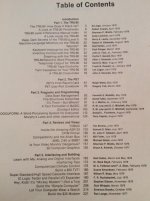gp2000
Experienced Member
Level I BASIC doesn't have INKEY$ nor does it have PEEK. INPUT waits for input. There's no obvious way to write a game or other interactive software that needs to poll the keyboard. I happened to glance through "Some of the Best from Kilobaud Microcomputing" and saw where some clever soul figured out a way using pure Level I BASIC. That is, nothing tricky like loading an assembly language program that somehow extends BASIC (geez, if that is even possible).
If you like, try and figure it out yourself. Chances are it will be the most obsolete technique you find this month.
No need to write Breakout or Tetris, just take this simple program and have it do D=-D when a key is pressed so the dot changes direction. Just make sure the dot keeps moving when no key is pressed.
For bonus internet points distinguish between two different keys (you can pick which pair). Can you do 3 different keys? 4?
If you like, try and figure it out yourself. Chances are it will be the most obsolete technique you find this month.
No need to write Breakout or Tetris, just take this simple program and have it do D=-D when a key is pressed so the dot changes direction. Just make sure the dot keeps moving when no key is pressed.
Code:
10 CLS
20 D=1:X=0
30 RESET(X,24):X=X+D
40 IF X > 127 THEN X = 0
50 IF X < 0 THEN X = 127
60 SET(X,24)
70 GOTO 30For bonus internet points distinguish between two different keys (you can pick which pair). Can you do 3 different keys? 4?

